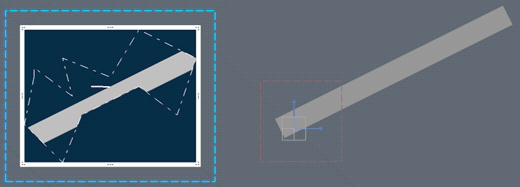Displaying Views | ||||||
|
| |||||
Track History of View Display
You can track history of view display in the current working session using a specific setting.
![]()
Display Views
You can set up the optimal context for checking views.
| Important: You can remove the color code used to identified already-displayed views from the specification tree. To do this, right-click the layout and select Delete History of Displayed Views. |
![]()
Capture the Display Area
By default, the view display area contains the content of the view and of its background. You can define your own custom display area, which will be taken into account when displaying the view.
Perform the previous scenario, and display the view as you want to capture it.
| Important: You can remove a view's custom display area by right-clicking the view and selecting . The display area for this view will now be the default one. |




 or middle handles
or middle handles  of the white frame.
of the white frame.